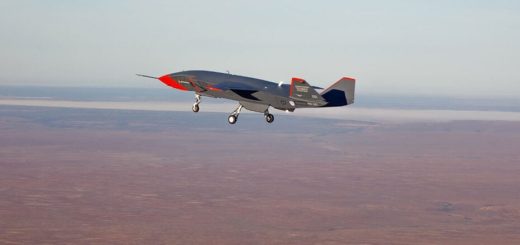Ukraine, France and NATO conduct successful tests of glide bomb defense system

France’s defense procurement agency, DGA, has successfully conducted a live trial aimed at countering glide bombs, in collaboration with the Ukrainian military and NATO.
The exercise, carried out at the DGA missile testing center in Biscarosse, southwestern France, was to evaluate a demonstrator designed to detect, track and intercept Russian glide bombs.
What are glide bombs and why are they a threat?
Russian glide bombs refer to retrofitted Soviet-era general-purpose bombs, such as the FAB-500 and FAB-1500, that are equipped with UMPK (Unified Planning and Correction Module) guidance kits.
A FAB-500 with a UMPK kit under the wing of a Su-34 (Credit: Ministry of Defence of the Russian Federation)Deployed since early 2023, these UMPK-upgraded bombs can glide up to 90 kilometers (55 miles) from their launch point, utilizing fold-out wings and satellite-guided navigation. This concept bears some resemblance to the US Joint Direct Attack Munition (JDAM) kit, which converts unguided bombs into precision-guided weapons.
This low-cost yet destructive threat allows Russian aircraft to strike from beyond the range of Ukrainian air defense systems.
Glide bombs have become a critical risk on the modern battlefield. To address this, NATO ACT launched a rapid innovation challenge, selecting three European companies to develop components for a layered defensive solution: French firms Alta Ares and ATREYD, plus Germany’s TYTAN.
A multinational effort with Ukraine in focus
The trials brought together NATO’s Allied Command Transformation (ACT), the NATO–Ukraine Joint Analysis, Training and Education Centre (JATEC), the French DGA, and representatives from Ukraine’s Ministry of Defense and Armed Forces. The program was fast-tracked through special procedures to accelerate delivery of a deployable capability.
The operational scenario involved Banshee Jet 80 aerial targets simulating incoming threats. The test campaign featured radar and optical tracking, and real-time trajectory analysis. According to officials, the campaign validated the feasibility of a multi-layered defense system relying on interceptor drones. The Ukrainian delegation expressed optimism that an initial operational capability could be fielded before the end of 2025.
RELATED
High-speed drone interceptors race to counter Shahed and loitering munition
A follow-up integrated test campaign is already being prepared, reflecting a strong push to deliver interoperable defenses for Ukraine against these evolving threats. Among the promising solutions, high-speed interceptor drones stand out, offering a fast and cost-effective countermeasure – not only to glide bombs, but also to Iranian-designed Shahed drones, the low-cost loitering munitions widely used by Russia to saturate Ukrainian air defenses and target military and civilian infrastructure. The post Ukraine, France and NATO conduct successful tests of glide bomb defense system appeared first on AeroTime.
France’s defense procurement agency, DGA, has successfully conducted a live trial aimed at countering glide bombs, in collaboration…
The post Ukraine, France and NATO conduct successful tests of glide bomb defense system appeared first on AeroTime.






